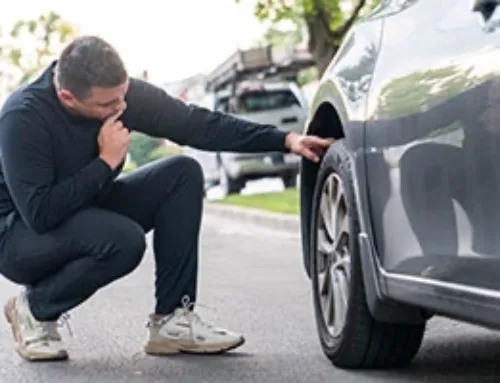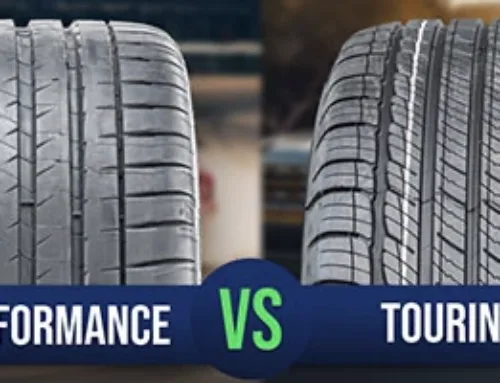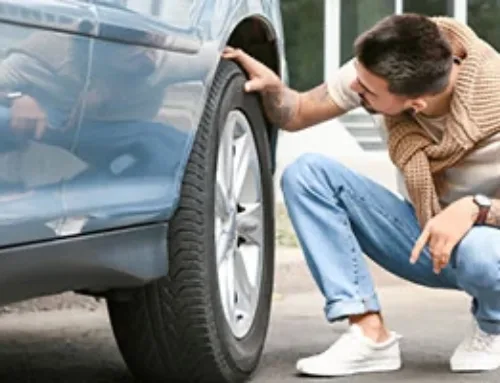Table of Contents
Have you ever noticed a vibration in your steering wheel when you speed up? This could be the result of unbalanced tires. In this article, we’ll investigate tire balancing—essential to your vehicle’s performance and keeping you safe on the road. Balancing your tires is a critical part of tire maintenance and will help you keep your car running smoothly and extend the lifespan of your tires.

What is tire balancing?
Tire balancing is the process of distributing the weight of your tire and the entire wheel assembly evenly so that it spins smoothly, even at high speeds. Basically, it’s about ensuring that your tire’s weight is evenly distributed around the axle.
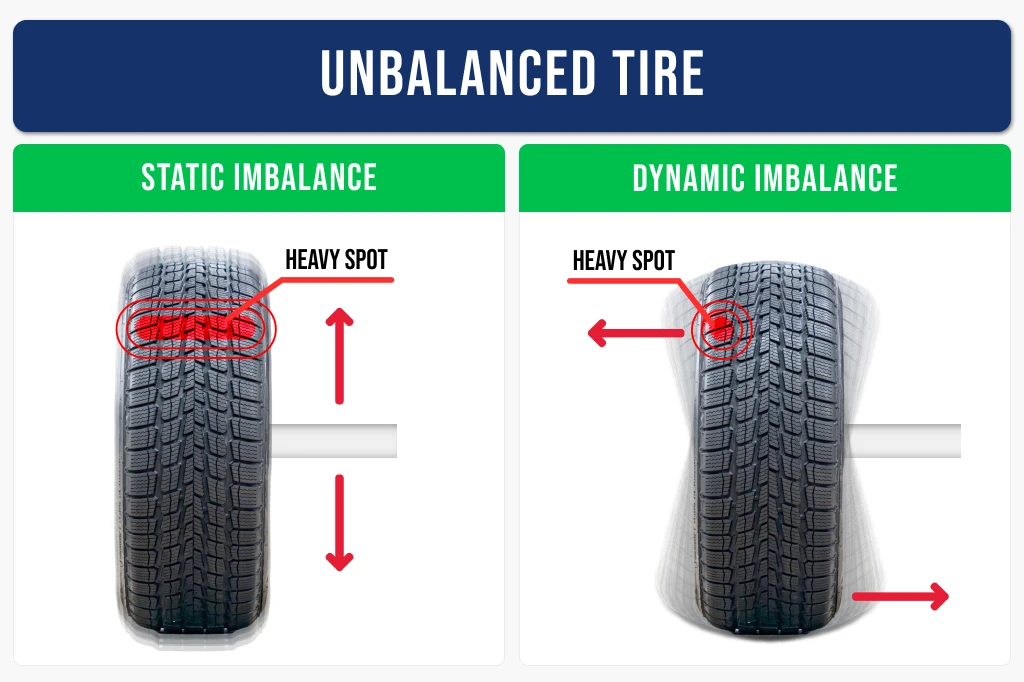
This is true not just when your tires are unmoving but also when they are rotating—so balancing services need to balance both the still and moving wheels.
If the weight distribution is off, it can make your driving experience less comfortable and can result in your tire tread wearing down unevenly.
Is balancing the same as wheel alignment?
Don’t confuse balancing your tires with wheel alignment, though. Tire alignment involves adjusting your suspension so the angles of the wheels are parallel. If your tire alignment is off, you won’t feel any vibration, but you may notice that if you let go of the steering wheel while driving straight, your car pulls to one side or the other rather than continuing on straight.
Signs your tires may need balancing

So, how do you know if your tires need balancing? The most common symptom is vibration, especially at speeds of over about 50 mph. Depending on whether the issue is with your rear or front tires, you might feel it in your steering wheel or seat.
Unbalanced tires can also cause your tire treads to wear down unevenly, so if you notice irregular wear in your tires, it might be time to have them balanced. Remember, it’s always better to catch these issues early to prevent further damage and to keep your car running smoothly.
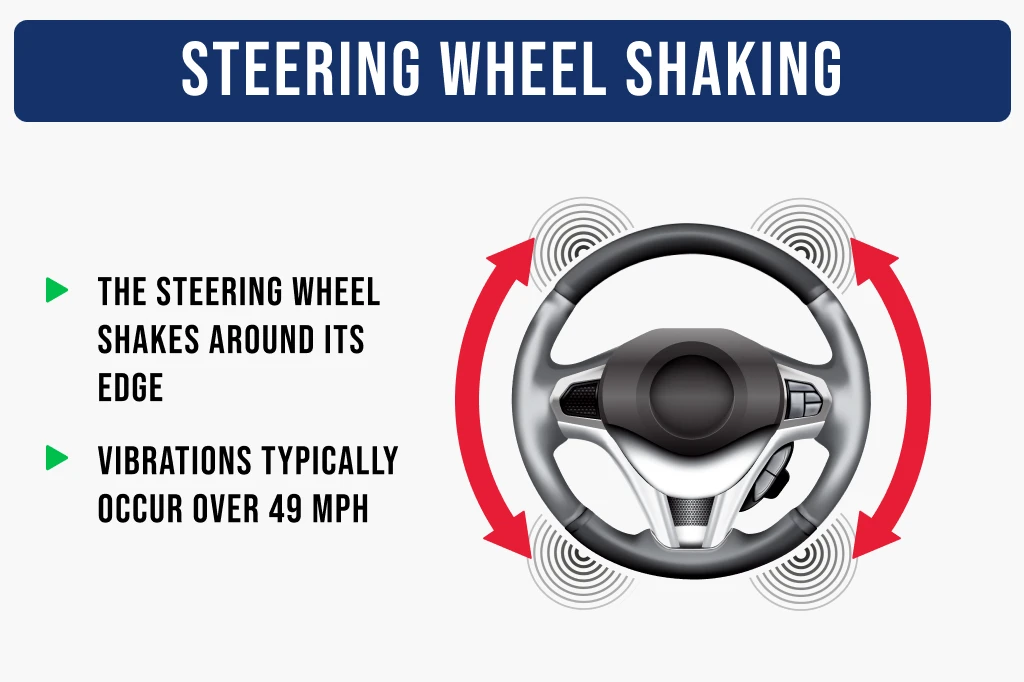
Why is my tire and wheel assembly unbalanced?
An imbalance in your tires can happen for several reasons. It could be due to uneven tread wear, or your tire might not be perfectly round. Even tiny discrepancies in your tire or wheel can put things out of balance. These are the main causes of your tires becoming unbalanced:
- Badly mounted tires
- Getting a flat tire
- Everyday wear and tear
- Tires hit the potholes
- An imbalanced wheel assembly
- Uneven tire wear
- Faulty steering parts, joints, shock absorbers, etc.
When your tires are unbalanced, they can wobble as they rotate, leading to uneven wear, vibration, and potentially unsafe driving conditions.
Don’t let the best tire deals & tips roll by!
Sign up for our newsletter
How to balance your tires
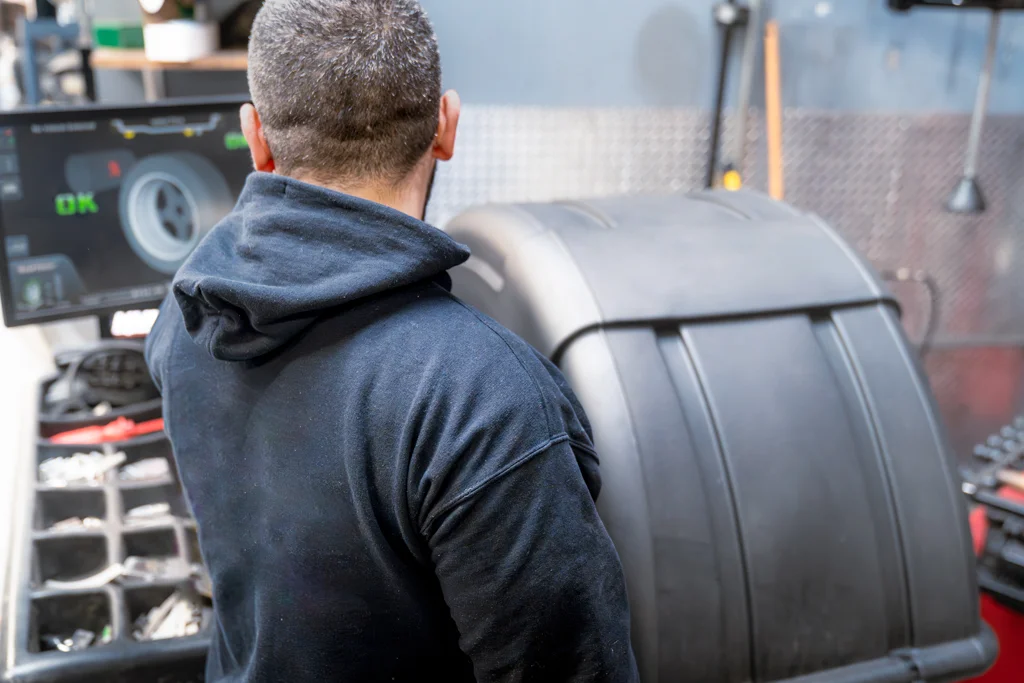
We always recommend taking your car to a trained technician when you notice signs of unbalanced wheels. They have the specialist equipment required for proper wheel balancing.
Your mechanic will use a specialist tire balancing machine to work out where any imbalance is. This checks the wheels while they are spinning, not just static. Then the mechanic can add a small wheel weight to specific spots to balance them out. They may also decide to rotate the tires at this point to help with the overall tire balance of your four wheels.
There are two methods your mechanic may use to balance your tire/wheel assembly, either weight match-mounting or uniformity match-mounting:
Uniformity match-mounting
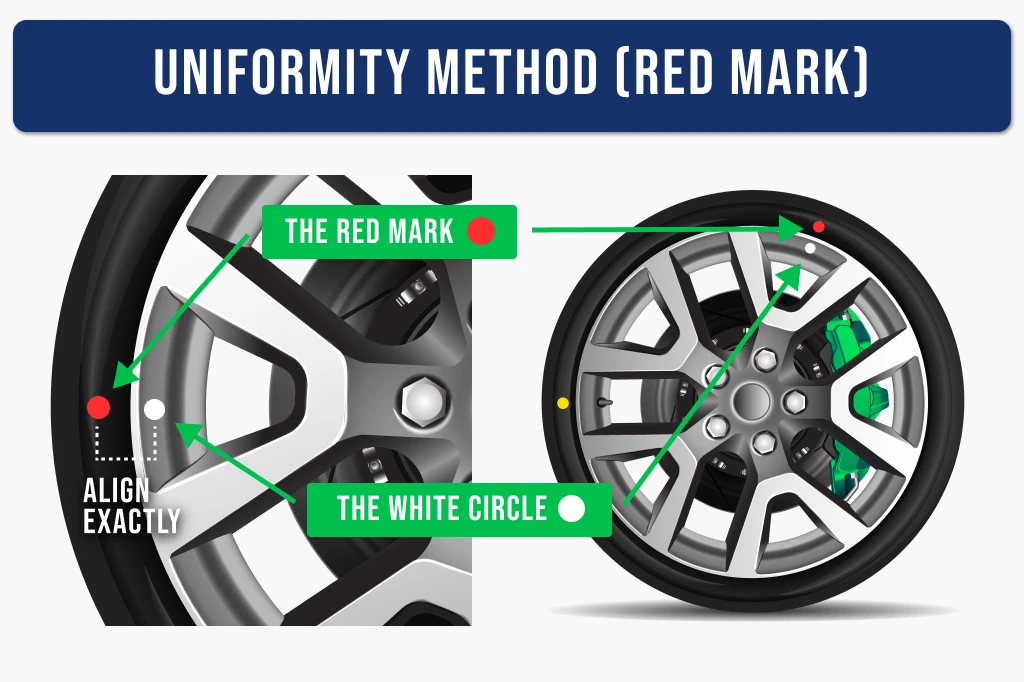
Uniformity match-mounting involves aligning the point of maximum radial force variation with the point of minimum radial run-out on the wheel assembly, which is shown by a colored dot or notch. This method looks at the variation in the force you can see when you rotate the tire’s axis at a specific speed with a specific load applied.
Weight match-mounting
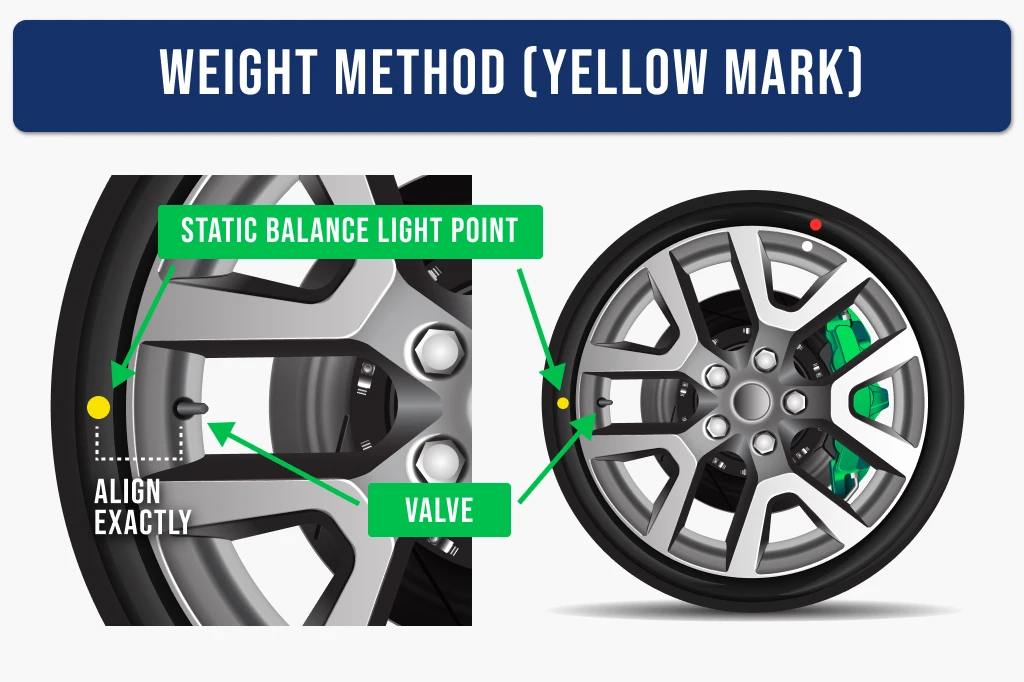
Weight match-mounting is used when the point of minimum radial run-out is not indicated on your wheel assembly. In this method, the point of greatest weight (the valve stem on the wheel assembly) is aligned with the point of least weight (indicated by a mark on the tire).
Once the match-mounting has been completed, using one of these methods, balancing the tire/wheel assembly can be carried out.
The importance of balancing your tires
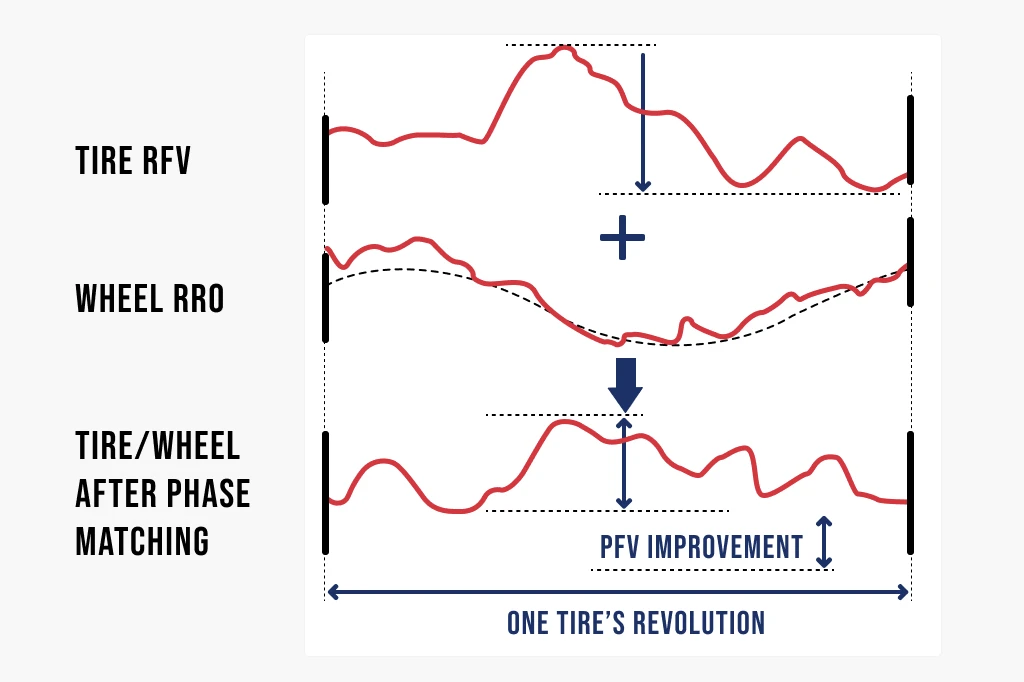
If you’re wondering, “Is tire balancing necessary?” it really is:
- Balanced tires will give you a smoother ride by reducing vibration and bounce. This makes your drive more comfortable and reduces the stress on your vehicle’s suspension system.
- Properly balanced tires wear more evenly, meaning they’ll last longer than out-of-balance tires that suffer from excessive tire wear. This can save you money in the long run, as you won’t need to replace your tires so often.
- Well-balanced tires can improve your vehicle’s fuel efficiency. Unbalanced tires create uneven friction and resistance on the road, which makes your vehicle work harder and use more gas.
How often should you balance your tires?
Most tire experts recommend you get your tires rotated and balance your tires and wheels approximately every 5,000 to 6,000 miles. However, if you notice symptoms of unbalanced tires, such as steering wheel vibration or uneven tire wear, you should take them your car in for a tire balance right away. Also, if you’ve recently had a flat tire repaired or bought new tires, carrying out a full tire and wheel balancing is a good idea.
Frequently Asked Questions
What does balancing a tire do?
Tire balancing ensures your tire’s weight is even all around the axle. If your wheel and tire assembly are well balanced, they will spin smoothly at high speeds, giving you a smooth ride and helping your tires to last longer. The tire balance process involves mounting each tire and wheel assembly on a special machine, which spins so the mechanic can see where the imbalance in weight is. Then small weights are added to ensure the entire tire is balanced. This will ensure you can enjoy a smoother ride, and your tire life will also be extended.
Do you really need to balance your tires?
Yes, you do need to balance your tires. Doing so will help your tires to wear evenly and your vehicle to run smoothly. Out-of-balance tires can lead to uncomfortable vibrations, particularly at speeds above 50 mph, and cause your tires to wear down much more quickly. So, while it might seem like a minor detail, balancing your tires and carrying out wheel alignment can make a big difference in your driving experience and help you get the most out of your tires.
How often do you need to balance your tires?
You should have your tires balanced every 5,000 to 6,000 miles or at every tire rotation. You should get your tire balanced sooner if you start to notice your floor or steering wheel vibrating, especially when you go faster. It’s also a good idea to go for a wheel balancing after you’ve had a flat tire or if you’ve had a new tire installed. Remember, taking your tires to be balanced regularly will give you a smooth ride, longer tire life and keep you safer on the roads.
Can I balance my own tires?
No, it’s generally not a good idea to balance your own tires. While it’s technically possible, it requires specialized equipment and skills. Without the right tools and equipment, you could end up doing more harm than good. So, unless you’re an experienced mechanic, it’s best to leave this job to the professionals.





